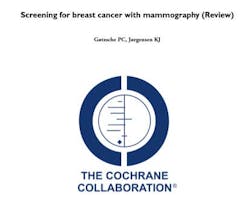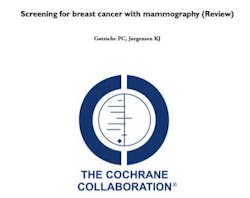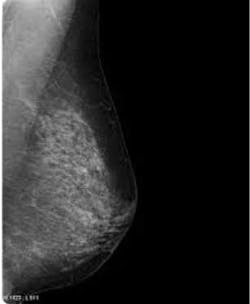Screening mammography's impact on breast cancer mortality: The debate continues
By Maria Perno Goldie, RDH, MS
The risks and benefits of screening mammography continue to warrant considerable debate and attention. Randomized controlled trials (RCTs) conducted from the 1960s to 1980s showed that screening mammography reduced breast cancer mortality.(1) But these studies were conducted in a period when breast cancer treatments were less effective and women were not as aware of breast cancer and its causes and treatments. This study looked at RCTs comparing mammographic screening with no mammographic screening.
The conclusion was that the 25-year collective mortality from breast cancer was comparable among women in the mammography and no-mammography groups, and these findings did not differ with age. Within 15 years of baseline, over 106 cases of breast cancer were identified with screening mammography. Therefore, 22% of screen-detected cancers (106/484) represented overdiagnosed breast tumors.(3) An editorial in the British Medical Journal (BMJ) suggests that long-term follow-up does not support breast cancer screening in women under the age of 60.(4) The authors of the editorial agree with Miller and colleagues that the justification for screening by mammography should be reassessed by policymakers.
The outcomes of the Canadian study support those of other studies of breast cancer screening.(5,6) These studies propose that screening's influence on the decline in breast cancer mortality is exceeded by improvements in treatment. Also, the benefits of screening mammography are smaller and the harms associated with overdiagnosis are greater than have been previously appreciated. Mammograms are expensive and have high rates of false-positive findings.(7,8) For years, we’ve been told that mammograms can save lives. The feeling of getting an annual mammogram is comforting. So for many women this new information will be confusing, and others will be very suspicious. Some experts suggest encouraging patients to follow the 2009 U.S. Preventive Services Task Force guidelines which says that average-risk women should be screened every two years beginning at age 50.(9)
References
1. Gøtzsche PC, Jørgensen KJ. Screening for breast cancer with mammography. Cochrane Database of Systematic Reviews, 2013, ID: CD001877.
2. www.cochrane.dk.
3. Miller AB, et al. Twenty-five-year follow-up for breast cancer incidence and mortality of the Canadian National Breast Screening Study: Randomized screening trial. BMJ 2014 Feb 11; 348:g366.
4. Kalager M, Adami HO, Bretthauer M. Editorial. Too much mammography. BMJ 2014; 348:g1403.
5. Bleyer A, Welch HG. Effect of three decades of screening mammography on breast-cancer incidence. N Engl J Med 2012 Nov 22; 367:1998.
6. Autier P, et al. Breast cancer mortality in neighbouring European countries with different levels of screening but similar access to treatment: Trend analysis of WHO mortality database. BMJ 2011 Jul 28; 343:d4411.
7. O'Donoghue C, Eklund M, Ozanne EM, Esserman LJ . Aggregate cost of mammography screening in the United States: Comparison of current practice and advocated guidelines. Ann Intern Med 2014 Feb 4; 160:145.
8. Welch HG, Passow HJ. Quantifying the benefits and harms of screening mammography. JAMA Intern Med 2013 Dec 30; [e-pub ahead of print].
9. U.S. Preventive Services Task Force (USPSTF). Screening for Breast Cancer. www.uspreventiveservicestaskforce.org/uspstf/uspsbrca.htm



